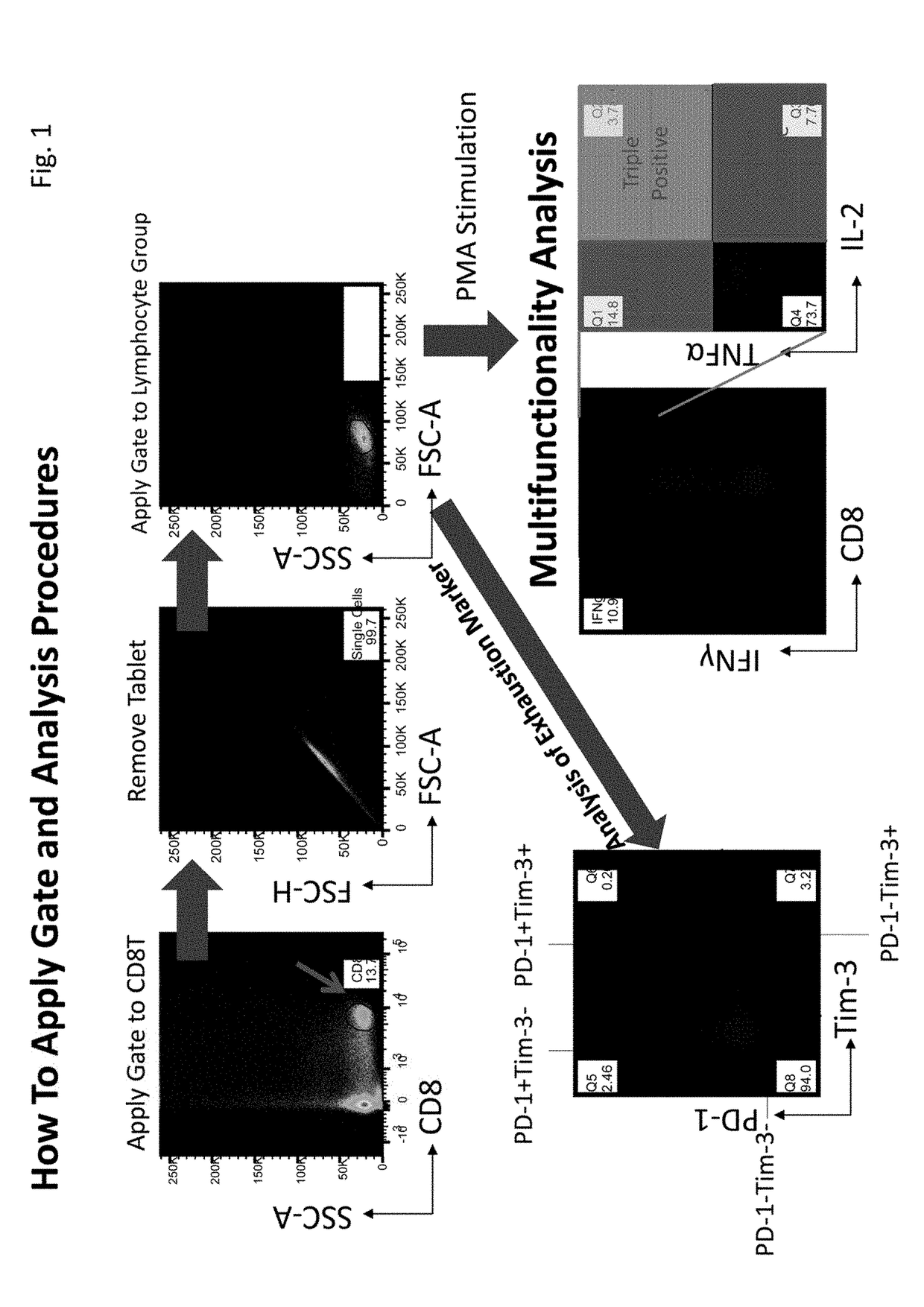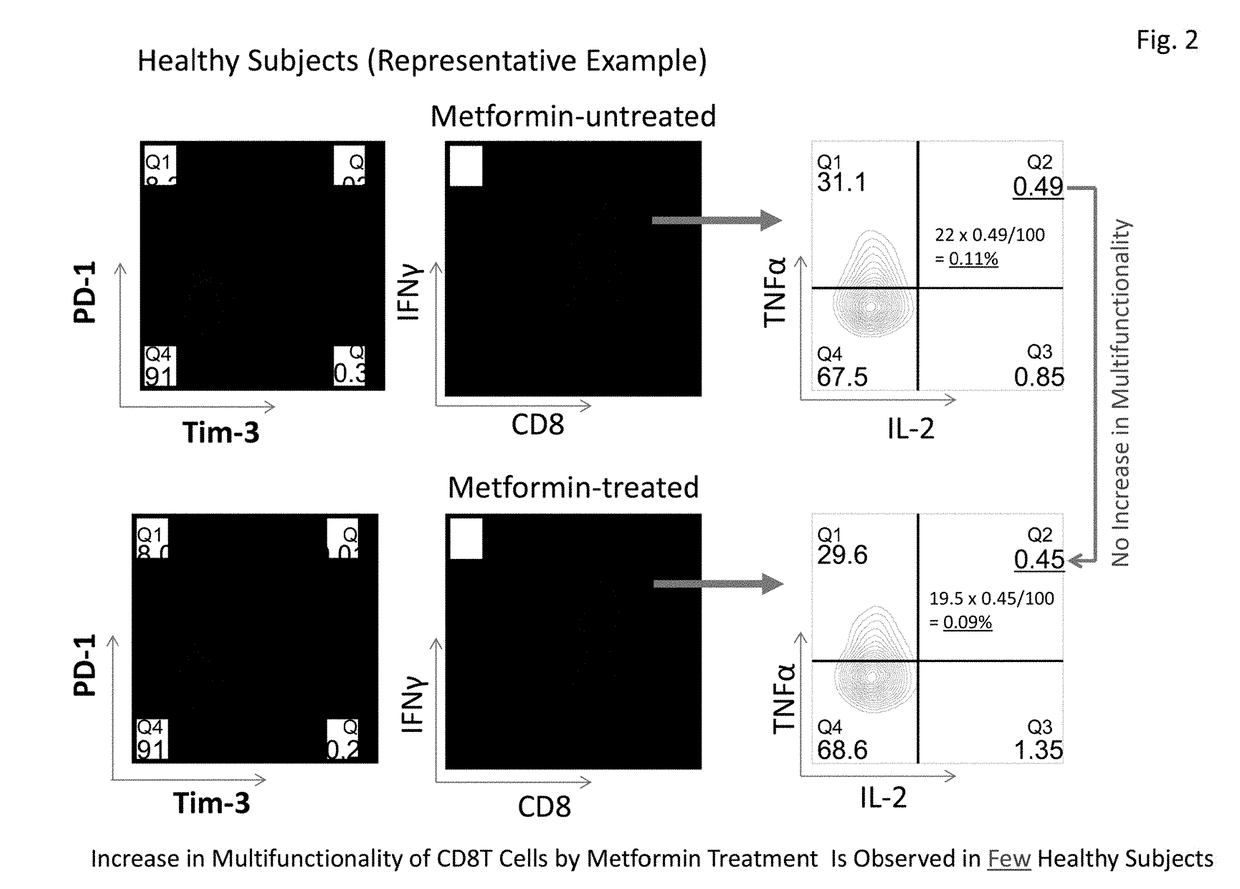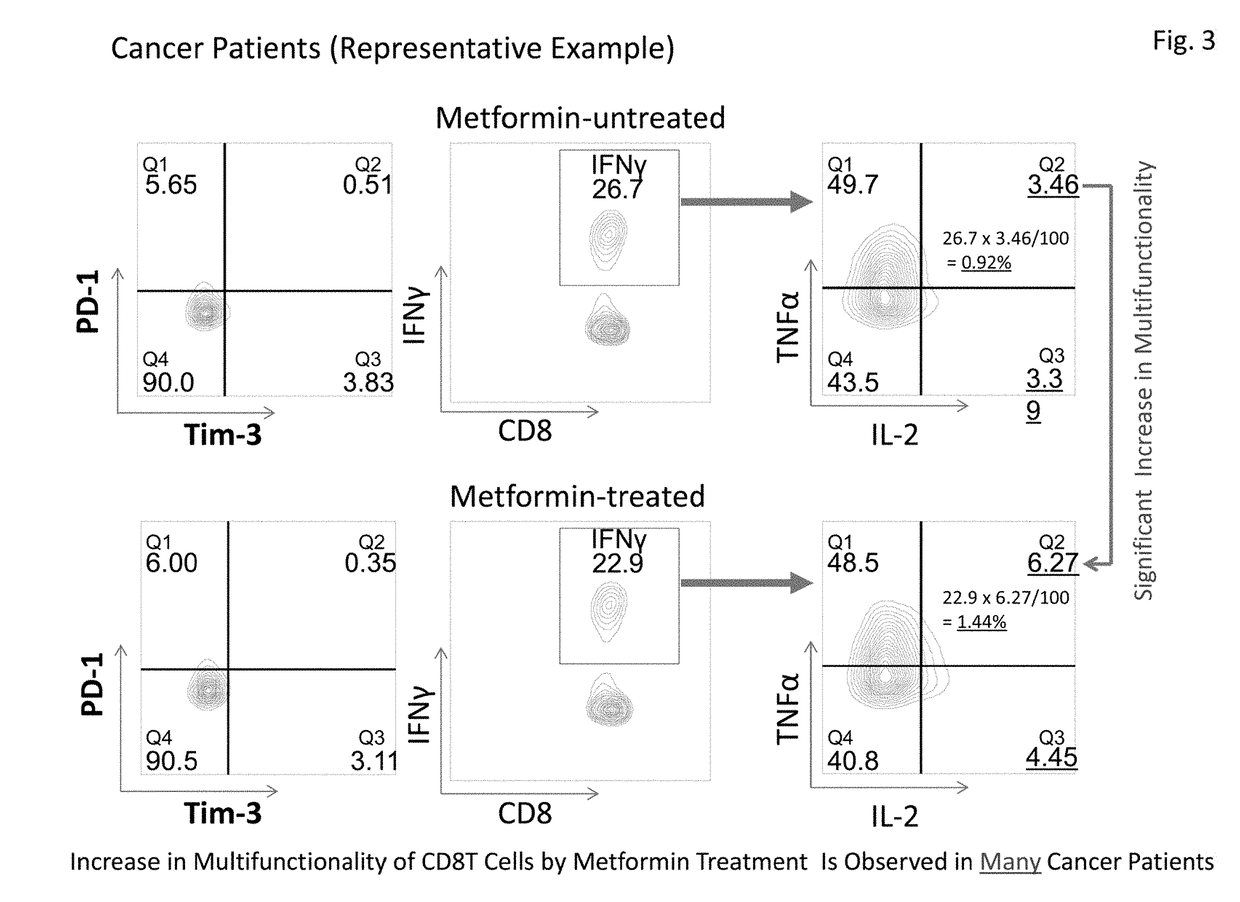Method for enhancing immune cell function and method for assessing immune cell multifunctionality
a multifunctionality and immune cell technology, applied in the field of enhancing immune cell function and assessing immune cell multifunctionality, can solve the problems of increasing the number of exhaustion molecules, affecting the prognosis, and difficult to ascertain the immune kinetics of healthy subjects or patients, so as to improve the prognosis, improve the prognosis, and improve the effect of treatmen
- Summary
- Abstract
- Description
- Claims
- Application Information
AI Technical Summary
Benefits of technology
Problems solved by technology
Method used
Image
Examples
example 1
ll Multifunctionality Evaluation Method
[0071]This Example describes a method for evaluating immunity of immune cells. First, immune cell multifunctionality was analyzed using a flow cytometer. Subsequently, changes in multifunctionality of immune cells by a metformin treatment were confirmed in healthy subjects and cancer patients. The treatment of immune cells was performed using the (1) materials and (2) method below.
(1) Materials
[0072]Lymphocyte-separating reagent: Ficoll-Paque® (GE Healthcare)
[0073]Cell cryopreservation liquid: Bambang Car (Nippon Genetics)
[0074]Human cell medium: AIM V® Medium (Gibco)
[0075]Cell activation reagent: Potent nanomolar activator of protein kinase C (Sigma-Aldrich) Ionomycin (Sigma-Aldrich)
[0076]Intracellular protein transport inhibitor: BD Gorgi Stop™ (containing monensin) (BD Biosciences)
[0077]Staining buffer: 0.58 g of EDTA (Nacalai Tasque) dissolved in 1 L of PBS (Gibco) containing 2% FCS (Thermo)
[0078]Cell fixing solution / Permeation buffer BD Cy...
example 2
ll Multifunctionality Evaluation Method
[0086]This Example examined expression frequencies of exhaustion molecules PD-1 and Tim-3 in CD8+T cells of five healthy subjects and five primary lung cancer patients (stage I). It was revealed that the expression of PD-1 was significantly low in cancer patients. Further, although there was a tendency that the expression of Tim-3 was high in cancer patients, no significant difference was observed with this sample number (FIG. 4). However, since healthy subjects and cancer patients clearly have different expression patterns in CD8+T cells, more detailed multifunctionality analysis becomes possible by combining expression patterns and multifunctionality analysis of PD-1 and Tim-3, in addition to the total CD8+T cells.
example 3
lts of Multifunctionality Recovery by Metformin
[0087]This Example analyzed test results of recovery of multifunctionality of CD8+T cells by metformin in 10 healthy subjects and 31 cancer patients (stage I) based on the results obtained by the method in Example 1. The analysis results are shown in Table 3 below. Table 3 shows the results of cytokine production abilities of four kinds of CD8+T cells, i.e., PD-1-positive, Tim-3-negative CD8+T cells (PD-1+, Tim-3−), PD-1-positive, Tim-3-positive CD8+T cells (PD-1+, Tim-3+), PD-1-negative, Tim-3-positive CD8+T cells (PD-1−, Tim-3+), and PD-1-negative, Tim-3-negative CD8+T cells (PD-1−, Tim-3−), in addition to the total CD8+T cells (total CD8T). Cytokine production ability refers to cytokine production ratios of (A) three kinds of cytokines, IFNγ / TNFα / IL-2, (B) two kinds of cytokines, IFNγ / TNFα, (C) two kinds of cytokines, FNγ / IL-2, and (D) one kind of cytokine, IFNγ.
[0088]The results shown in Table 3 revealed that cytokine production abi...
PUM
 Login to View More
Login to View More Abstract
Description
Claims
Application Information
 Login to View More
Login to View More - R&D
- Intellectual Property
- Life Sciences
- Materials
- Tech Scout
- Unparalleled Data Quality
- Higher Quality Content
- 60% Fewer Hallucinations
Browse by: Latest US Patents, China's latest patents, Technical Efficacy Thesaurus, Application Domain, Technology Topic, Popular Technical Reports.
© 2025 PatSnap. All rights reserved.Legal|Privacy policy|Modern Slavery Act Transparency Statement|Sitemap|About US| Contact US: help@patsnap.com



